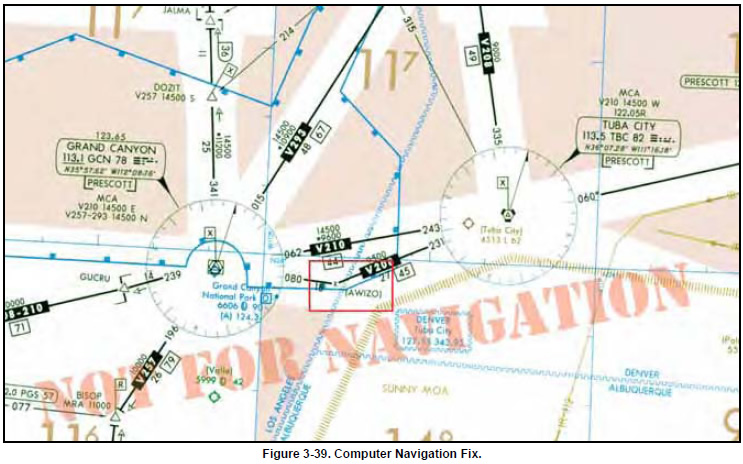 |
|
| INSTRUMENT PROCEDURES HANDBOOK |
|
An integral part of RNAV using en route charts
typically involves the use of airborne navigation
databases. Database identifiers are depicted on
NACO en route charts enclosed in parentheses, for
example AWIZO waypoint, shown in Figure 3-39.
These identifiers, sometimes referred to as computer
navigation fixes (CNFs), have no ATC function and
should not be used in filing flight plans nor should
they be used when communicating with ATC.
Database identifiers on en route charts are shown
only to enable you to maintain orientation as you use
charts in conjunction with database navigation systems,
including RNAV.
Many of the RNAV systems available today make it all too easy to forget that en route charts are still required and necessary for flight. As important as databases are, they really are onboard the airplane to provide navigation guidance and situational awareness; they are not intended as a substitute for paper charts. When flying with GPS, FMS, or planning a flight with a computer, it is important to understand the limitations of the system you are using, for example, incomplete information, uncodeable procedures, complex procedures, and database storage limitations. For more information on databases, refer to Appendix A, Airborne Navigation Database. Historically in the U.S., IFR flights have navigated along a system of Federal Airways that require pilots to fly directly toward or away from ground-based navigation aids. RNAV gives users the capability to fly direct routes between any two points, offering far more flexible and efficient en route operations in the high-altitude airspace environment. As part of the ongoing National Airspace Redesign (NAR), the FAA has implemented the High Altitude Redesign (HAR) program with the goal of obtaining maximum system efficiency by introducing advanced RNAV routes for suitably equipped aircraft to use. |
